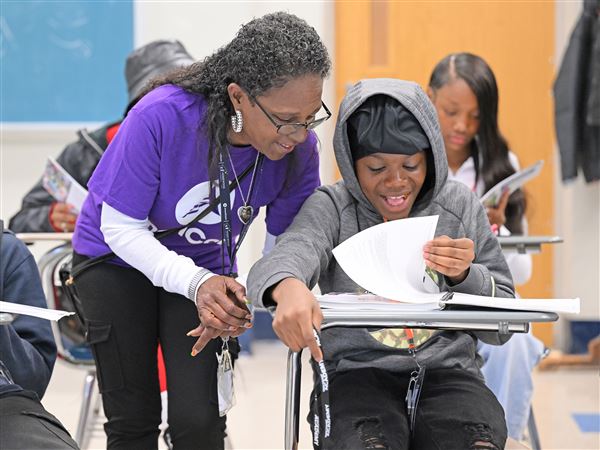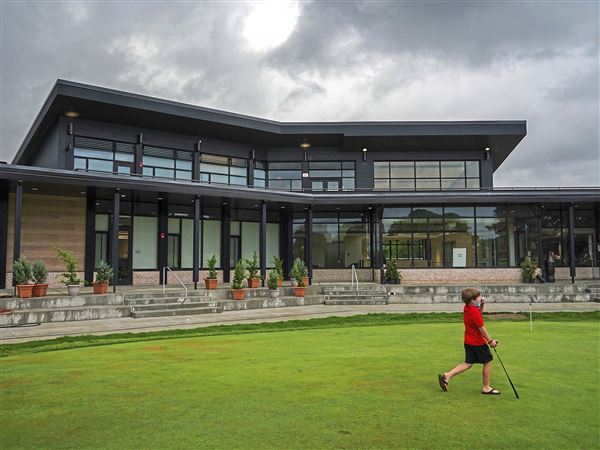We are indeed living in “Strange Times,” to invoke the title of a new Carnegie Museums Nexus series on the Anthropocene — that is, Earth in the age of humans.
Scientific evidence of the impact of human activity on the planet that sustains us mounts exponentially and, to many, alarmingly. Debate about the science, how public policy should respond and what it means for personal economic and lifestyle choices is active across the political spectrum.
Why, I’ve been asked, would Carnegie Museums want to engage such a dynamic and challenging topic? Especially at a time when people in the United States and around the world are wrestling with contentious issues of environmental and energy policy?
The short answer is that we believe that museums — especially those in our Carnegie Museums family — have an essential role to play in encouraging informed, thoughtful, imaginative and, above all, civil discussion of ideas that really matter. As is often said, at their best, museums are “safe places for unsafe ideas.”
I believe this to be true and fundamental to the tradition of Carnegie Museums. Back in 1898, when Andrew Carnegie directed his new museum to begin collecting dinosaur bones and fossils, many museumgoers had been born long before Darwin had published “On the Origin of Species”; evolution and geological time were, to them, new and unsafe ideas. When the Carnegie International exhibition began bringing Expressionism, Cubism and other 20th-century artistic movements to Pittsburgh, those too represented potentially unsafe ideas, sometimes-troubling harbingers of the challenges of post-modernity. Carnegie Museums provided Pittsburghers with access to the objects and ideas at the forefront of intellectual life then, as it does now.
Our commitment is, as it has been from the beginning, to bring intellectual developments to the public and to create thoughtful, stimulating and respectful conversations about them. Today we are expressing that commitment by bringing the concept of the Anthropocene to the fore.
Carnegie Museum of Natural History is preparing a major exhibition on the topic, opening this fall. And in the run-up to that exhibit, Carnegie Museums is offering the public its Carnegie Nexus program series in which policymakers, theatrical performers, artists, novelists, academics and scientists collaborate to explore what it means that we humans are changing the world we live in in fundamental ways.
Is the Anthropocene focus potentially controversial? Of course. The scientific community still is considering the implications of new discoveries, and citizens are still debating whether and how much human activity is driving environmental change. Our programs and exhibits on the Anthropocene are presenting not settled certainties but emerging understandings, not eternal verities but the struggle to comprehend.
Further, as museum professionals, we know that profound comprehension requires thinking as whole persons. Scientific information is fundamental, of course; interpreting complex science to share intellectual concepts with the public is necessary. But it is not sufficient. On a topic such as the Anthropocene — as with evolution or post-modernism or quantum mechanics — information is most powerful when integrated into the essential human capabilities of imagination, empathy and creativity. Science is most powerful when it embraces the wisdom of history and philosophy. Knowledge deepens in dialogue with art.
Museums of art, performing artists, historians of the arts and sciences, educators, scholars in the humanities and many others therefore have central roles to play in helping people absorb and integrate scientific ideas. Imagination allows us to conceive of possible new worlds; creativity allows us to see how they might come to be; empathy allows us to consider how beings other than ourselves might experience them.
Historians and philosophers make us aware of what has happened before and how we know what we think we know. The best answers, the wisest understandings about the relationship of humanity and earth, will emerge not from science alone but from science in the context of the arts and humanities.
Carnegie Museums — with its two museums of science and two of art, with its strong partnerships with world-class universities and deeply rooted community organizations — is distinctively positioned to offer programs incorporating the intellectual, the imaginative, the creative and the empathetic. “Strange Times” is our offering for today’s audiences on “unsafe ideas” of existential importance.
Jo Ellen Parker is president and CEO of Carnegie Museums of Pittsburgh. For a schedule of “Strange Times” events, go to nexus.carnegiemuseums.org.
First Published: January 26, 2017, 5:00 a.m.












